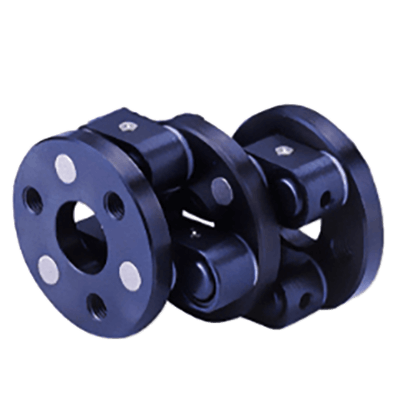What Is a Schmidt Coupling?

A Schmidt coupling is designed to connect two parallel shafts with varying shaft center distances in rotating equipment, enabling efficient power transmission even when the shafts are not aligned.
Uses of Schmidt Couplings
Schmidt couplings are versatile, allowing for the connection of shafts that are offset by a few millimeters to several tens of millimeters. Some models can adjust the distance between shaft centers while in motion, making them ideal for a range of applications:
1. Parallel Shaft Connection
For connecting parallel shafts with different center distances, Schmidt couplings provide a simpler and more compact solution compared to universal joints, gears, belts, and pulleys, which can be cumbersome for small offsets.
2. Roll-Forming Machine
In roll-forming machines, where rolls need to move vertically for spacing adjustments, Schmidt couplings allow for continuous operation without affecting the rotation, even when the motor position is fixed. This functionality is also beneficial in textile machinery for adjusting feed rolls.
Principle of Schmidt Couplings
Schmidt couplings utilize an off-axis, link motion mechanism. This system involves a series of links evenly spaced around a center disk, maintaining constant phase alignment between the end disks and the center disk. The unique design allows the center disk to rotate in sync with the end disks, regardless of the distance between shaft centers, while maintaining a constant link length.
Structure of Schmidt Couplings
The coupling consists of two flanged end disks and a central disk, connected by multiple links. These links are fitted with needle bearings to ensure smooth operation, with thrust washers and stoppers preventing disconnection. An oil seal and cap keep out contaminants, maintaining the integrity of the coupling.
Other Information on Schmidt Couplings
1. Material of Schmidt Couplings
Mainly constructed from carbon and stainless steel, with hardened steel or bearing steel for the moving parts like pins, Schmidt couplings are built for durability and longevity.
2. Precautions for Use
These couplings are not suited for shaft connections with significant angular misalignments. The design allows for minimal clearance and misalignment, requiring careful consideration to avoid axial or bending forces that could damage the coupling.
3. Limitation of Use Near Concentricity
While effective for parallel shaft adjustments, Schmidt couplings are not recommended for nearly concentric positions due to instability in the linkage motion. Care must also be taken to avoid interference with surrounding components during operation.